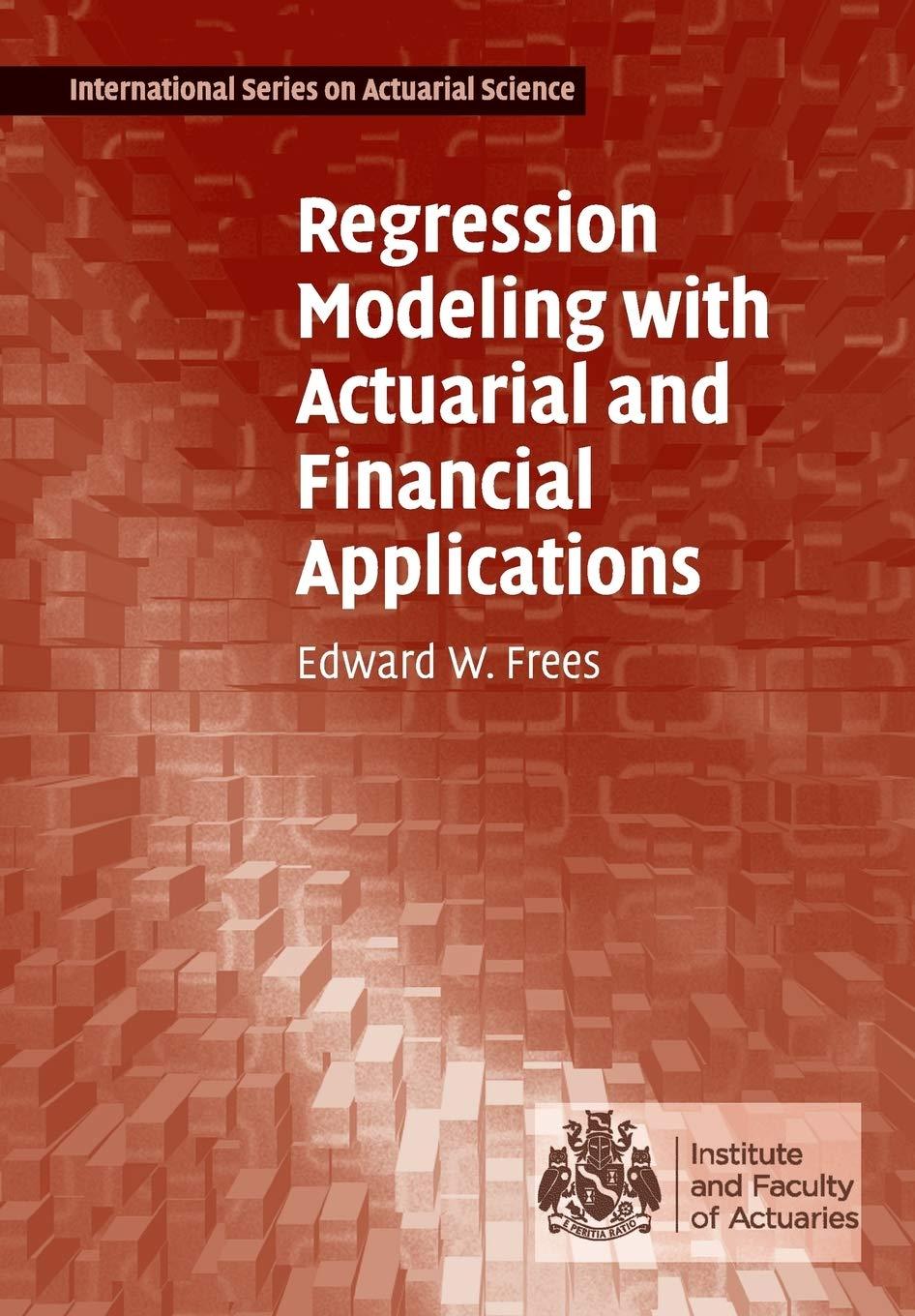We continue our study of term life insurance demand from Chapters 3 and 4. Specifically, we examine
Question:
We continue our study of term life insurance demand from Chapters 3 and 4. Specifically, we examine the 2004 Survey of Consumer Finances (SCF), a nationally representative sample that contains extensive information on assets, liabilities, income, and demographic characteristics of those sampled (potential U.S. customers). We now return to the original sample of \(n=500\) families with positive incomes to study whether a family purchases term life insurance. From our sample, it turns out that 225 did not \((\mathrm{FACEPOS}=0)\), whereas 275 did purchase term life insurance (FACEPOS \(=1\) ).
a. Summary Statistics. Provide a table of means of explanatory variables by level of the dependent variable FACEPOS. Interpret what we learn from this table.
b. Linear Probability Model. Fit a linear probability model using FACEPOS as the dependent variable and LINCOME, EDUCATION, AGE, and GENDER as continuous explanatory variables, together with the factor MARSTAT.
b(i). Briefly define a linear probability model.
b(ii). Comment on the quality of the fitted model.
b(iii). What are the three main drawbacks of the linear probability model?
c. Logistic Regression Model. Fit a logistic regression model using the same set of explanatory variables.
c(i). Identify which variables appear to be statistically significant. In your identification, describe the basis for your conclusions.
c(ii). Which measure summarizes the goodness of fit?
d. Reduced Logistic Regression Model. Define MARSTAT1 to be a binary variable that indicates MARSTAT \(=1\). Fit a second logistic regression model using LINCOME, EDUCATION, and MARSTAT1.
d(i). Compare the two models using a likelihood ratio test. State your null and alternative hypotheses, decision-making criterion, and decision-making rule.
d(ii). Who is more likely to purchase term life insurance, married or nonmarried? Provide an interpretation in terms of the odds of purchasing term life insurance for the variable MARSTAT1.
d(iii). Consider a married male who is age 54. Assume that this person has 13 years of education, annual wages of \(\$ 70,000\), and lives in a household composed of four people. For this model, what is the estimate of the probability of purchasing term life insurance?
Step by Step Answer:

Regression Modeling With Actuarial And Financial Applications
ISBN: 9780521135962
1st Edition
Authors: Edward W. Frees





